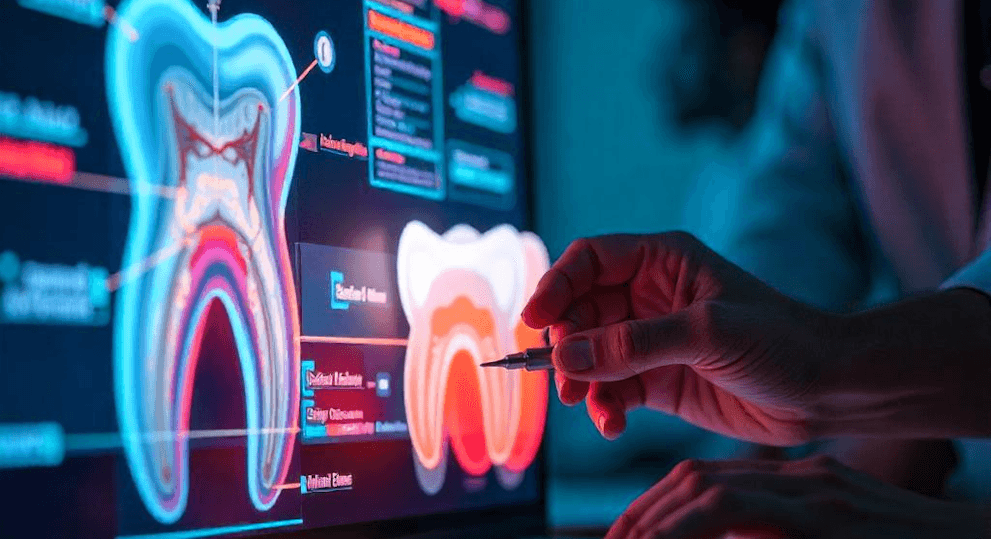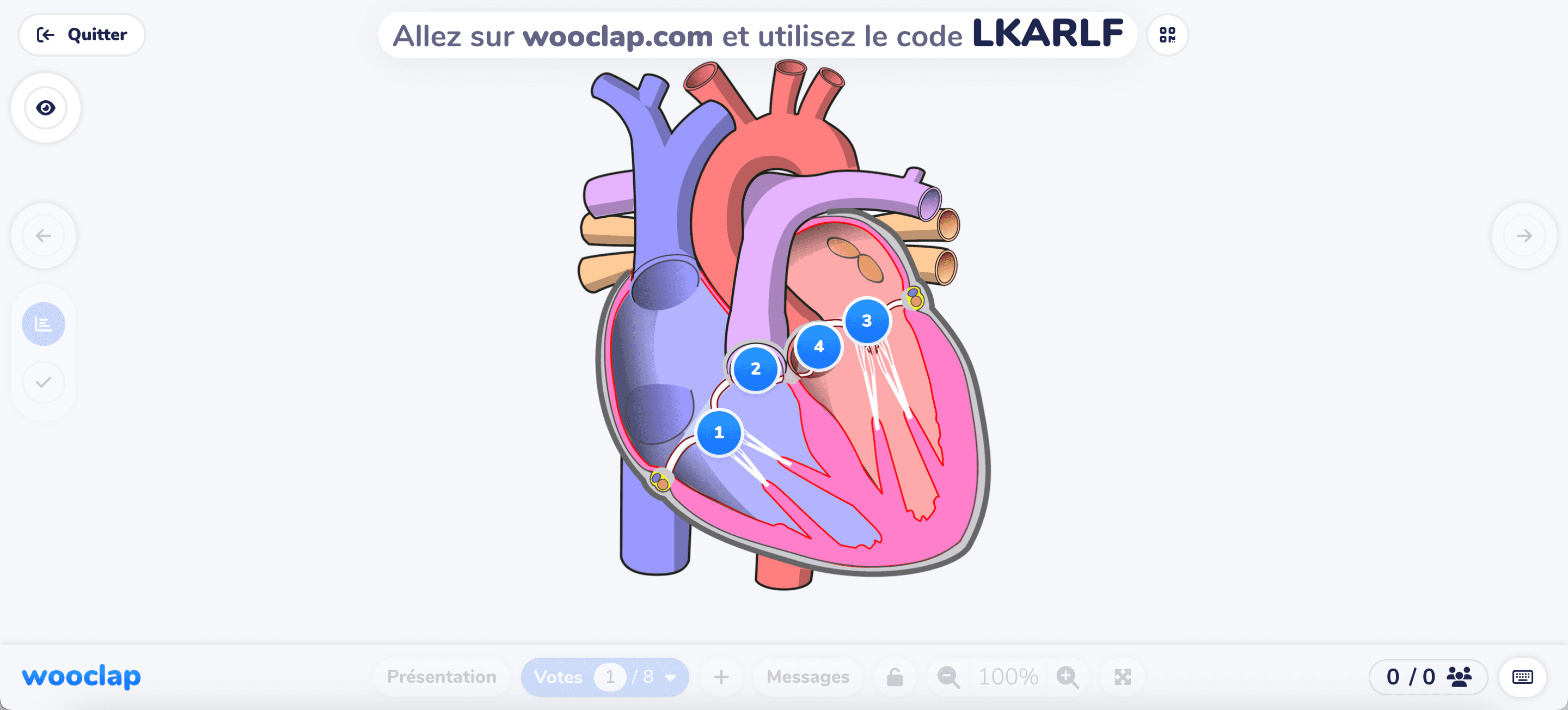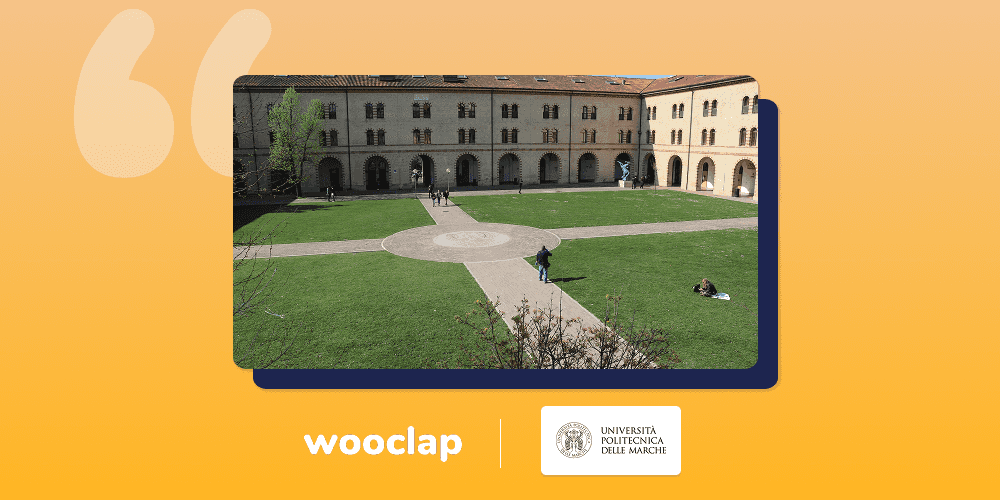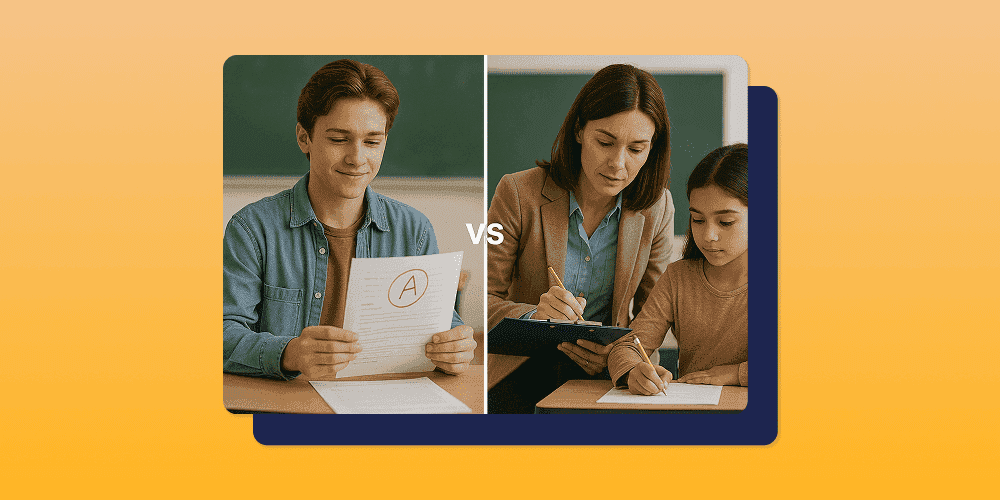
American summer tour! Wooclap will be at InstructureCon 2025
Come say hi at booth 41 from July 22nd to July 24th in Spokane, Washington
The rise of visual interactivity in medical education
03.06.2025 • 3 minutes

Images are everywhere in medical education: radiographs, anatomical diagrams, decision trees, clinical photographs… And yet, in many cases, they remain passive. They scroll through slides, illustrate handouts, accompany textbooks, but they rarely engage students’ thinking in an active way.
It’s time to change that.
The future of medical education Is multimodal
In an era where medical programs must prepare professionals to make complex decisions in uncertain environments, the goal is no longer just to transmit knowledge. It is to develop clinical judgment.
In this context, images can no longer be treated as mere illustrations. They must become triggers for reflection, levers for analysis, and objects of interaction.
Cognitive science is clear: it’s not the image itself that enhances learning, but the cognitive activity it sparks. An image becomes a learning tool when it is embedded in a task that demands attention, reasoning, and decision-making.
Discover how visual interactivity and clinical reasoning are transforming health education.
Watch our webinar replay and explore real-world use cases from our experts in our free playbook
Why images alone are not enough
According to Dual Coding Theory (Paivio, 1986), learning is more effective when information is processed both verbally and visually. But this only works if the image is part of an active process. A visual element with no pedagogical framing can easily go unnoticed or be quickly forgotten.
Cognitive Load Theory (Sweller, 1988) adds a crucial nuance: a poorly used image can not only be ineffective, but counterproductive. It can overload attention, confuse the message, or distract the learner. For an image to support learning, it must be activated through a purposeful task, a question, an interaction, a discussion.
Capturing attention and activating clinical reasoning
As Stanislas Dehaene reminds us, attention acts as a filter: it selects only the information the brain deems relevant. This means we must create conditions where an image becomes more than a support, it becomes a cognitive trigger.
The Visual Thinking Strategies (Housen & Yenawine) embody this approach. In this method, the image is at the center of a collective dialogue: observe, interpret, challenge perspectives. This turns a static visual into a shared cognitive experience.
In clinical education, the same mechanisms apply, whether analyzing an MRI, a chest X-ray, a wound photo, or a surgical plan.
When images become learning tools
Today, platforms like Wooclap help bring these pedagogical principles to life through interactive formats tailored to the realities of medical training. More than a simple engagement tool, Wooclap supports structured, multimodal learning.
Key features include:
- Drag and drop: to identify anatomical structures, sequence procedural steps, or pinpoint risk zones in a trauma scene
- Label an image: to reinforce technical vocabulary, encourage active recall, and strengthen knowledge retention
- Find on image: to detect anomalies, localize anatomical regions, and spark spatial reasoning
- Script Concordance and Clinical Judgment tests: to simulate real-world clinical ambiguity and train decision-making under uncertainty

Toward an augmented visual pedagogy
Rethinking the role of images in medical education isn’t just about making content more engaging, it’s about teaching students to see, understand, and decide better. In healthcare, every image is a hypothesis. Every observation is a piece of reasoning. Every interaction is an opportunity to learn.
Digital tools now allow us to unlock the full potential of visual interactivity, but only if we stop separating image from action.
Discover how visual interactivity and clinical reasoning are transforming Health Education 🧠
Watch our webinar replay and explore real-world use cases from our experts in our free playbook
Resources
- Paivio, A. (1986). Mental representations: A dual coding approach. Oxford University Press.
- Sweller, J. (1988). Cognitive load during problem solving: Effects on learning. Cognitive Science, 12(2), 257–285. https://doi.org/10.1207/s15516709cog1202_4
- Piaget, J. (1952). The origins of intelligence in children (M. Cook, Trans.). International Universities Press. (Ouvrage original publié en 1936)
- Vygotsky, L. S. (1978). Mind in society: The development of higher psychological processes. Harvard University Press.
- Bruner, J. S. (1966). Toward a theory of instruction. Harvard University Press.
- Dehaene, S. (2020). La science au service de l’école. Odile Jacob.
- Housen, A., & Yenawine, P. (2000). Visual Thinking Strategies: Learning to think and communicate through art. Visual Understanding in Education.
Mayer, R. E. (2009). Multimedia learning (2nd ed.). Cambridge University Press. - Tufte, E. R. (1990). Envisioning information. Graphics Press.
- Pettersson, R. (2012). Information design: An introduction. John Benjamins Publishing.
- Norman, D. A. (1993). Things that make us smart: Defending human attributes in the age of the machine. Addison-Wesley.
- Barthes, R. (1977). Image, musique, texte. Éditions du Seuil.
- Eco, U. (1968). La structure absente. Mercure de France.
Writer

The Wooclap team
Make learning awesome & effective
A monthly summary of our product updates and our latest published content, directly in your inbox.



